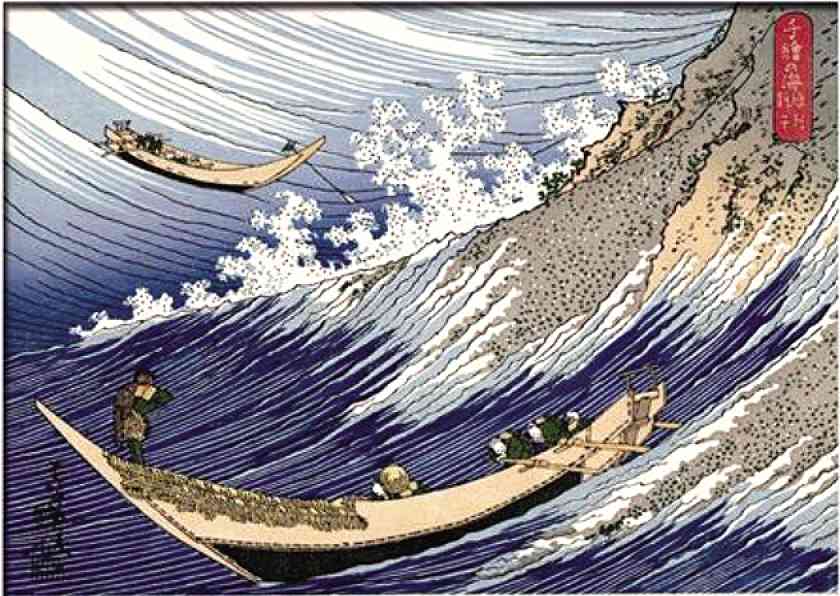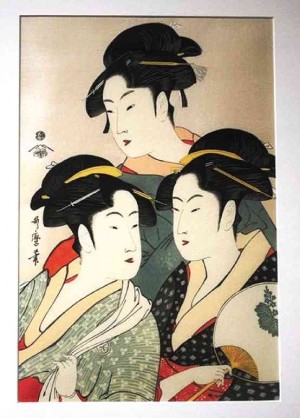
Utamaro comes to Manila and—what do you know?—it has to be in a children’s museum. We did a double-take on learning such adult art as his found its way to such venue.
Sample this art form in the exhibit “Ukiyo-e: Art and Tradition,” 26 traditional Japanese woodcut prints on view until Aug. 4 at the Karapatan Hall of Museo Pambata, Roxas Boulevard cor. South Drive, Manila.
This is part of the Japan Foundation, Manila’s participation in the Philippine-Japan Friendship Month and the 40th anniversary of the Asean-Japan Friendship and Cooperation. It has been organized in cooperation with the Embassy of Japan, Museo Pambata, and the Philippine Association of Printmakers.
A children’s printmaking workshop by the PAP has been scheduled in the venue on Aug. 3, 9 a.m., as part of the exhibit’s educational component.
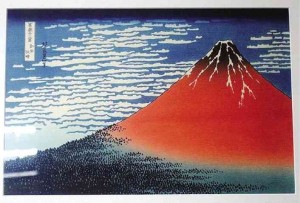
On Aug. 10, the artworks will go to Baguio Museum, where Japanese artist Haruka Furusaka will hold a woodblock-printing workshop in cooperation with the Cordillera Green Network.
Featured in the exhibit are representative works of the master artists of the Edo and Meiji periods: Kitagawa Utamaro, Katsushika Hokusai, Utagawa Hiroshige, Suzuki Harunobu, Keisai Eisen, Torii Kiyonaga, Chobunsai Eishi, Toshusai Sharaku, Eishosai Choki. The first three are the most well-known to Westerners.
Evanescent world

In the late 19th century, japonisme (the influence of Japanese culture on Western art) became fashionable among European artists. Van Gogh instantly recognized its significance and impact: “We wouldn’t be able to study Japanese art, it seems to me, without becoming much happier and more cheerful, and it makes us return to nature, despite our education and our work in a world of convention.”
Utamaro’s and Kiyonaga’s “emphasis on flat planes and strong linear outlines” and Hiroshige’s “odd angles and shapes in viewing landscapes” had a profound influence particularly on Van Gogh and Degas. Their introduction to the West one may even trace in the development of Art Nouveau.
What those Europeans saw were the Japanese color prints called ukiyo-e (“pictures of the floating world”). Richard Lane, in his book “Images from the Floating World,” says the name refers to a conception of an evanescent world, of fleeting beauty, and a realm of entertainment devoid of responsibilities, just pleasures.
That concept is conjured by 17th-century novelist Asai Ryoi in this passage: “Living only for the moment, turning our full attention to the pleasures of the moon, the snow, the cherry blossoms and the maple leaves; singing songs, drinking wine, diverting ourselves in just floating… refusing to be disheartened, like a gourd floating along with the river current.”
Thus this plebeian art reflects contemporary urban life, domestic activities, the pleasure quarters, kabuki actors and famous beauties, landscapes and seascapes, no politics, just amusements, the simple preoccupations of the commoner. No matter how earthy the subject is, however, each ukiyo-e piece is done with utmost refinement.
Urban pleasures
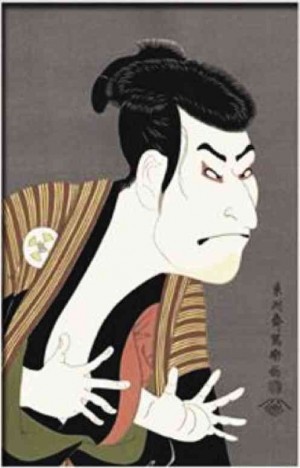
The dynamic art form contrasts with the official court-approved style of painting called kanô. It can range from the subtle eroticism of Hokusai’s “The Dream of the Fisherman’s Wife” to the brazen erotica of Eishi and Kiyonaga.
Its visual tones are as wide-ranging, from the dramatic dynamism of Hokusai’s “Fishing Boats at Chôshi” and Sharaku’s “Otani Oniji as the Servant Edobei” to the utter delicacy of Hiroshige’s “Camellias and Sparrows in the Snow.”
The subtlety of its color tonality can be best appreciated in Kubo Shunman’s use of all shades of gray in his triptych masterpiece “Departure Night for a Poetry Competition.” Haronubo was the first to produce full-color prints in the mid-18th century.
Hans Olof Johansson’s guide contextualizes it: “The art of ukiyo-e originated in the metropolitan culture of Edo (Tokyo) during the period of Japanese history when the political and military power was in the hands of the shoguns and the country was virtually isolated from the rest of the world. It is an art closely connected with the pleasures of theaters, restaurants, teahouses, geisha and courtesans in the even then very large city. Many ukiyo-e prints by artists like Utamaro and Sharaku were, in fact, posters advertising theater performances and brothels, or idol portraits of popular actors and beautiful teahouse girls. But this more or less sophisticated world of urban pleasures was also animated by the traditional Japanese love of nature, and ukiyo-e artists like Hokusai and Hiroshige have had an enormous impact on landscape painting all over the world.”
Extraordinary story
How the Impressionists got hold of them is an extraordinary story in itself.
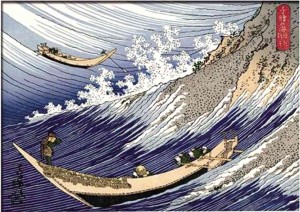
Rupert Richard Arrowsmith, in “The Transcultural Roots of Modernism: Imagist Poetry, Japanese Visual Culture, and the Western Museum System,” narrates: “Following the Meiji Restoration in 1868, Japan became open to imports from the West, including photography, which largely replaced ukiyo-e. It fell so far out of fashion that the prints, now practically worthless, were used as packing material for trade goods. When Europeans saw them, however, they became a major source of inspiration for Impressionist, Cubist and Postimpressionist artists… The prints also influenced early Modernist poetry in many important ways, as in imagery and aesthetic sentiments.”
Manet, Degas and Monet had long been collecting those cheap color woodblock prints but it was Postimpressionist Van Gogh who almost single-handedly popularized the painting style in the West. He said at one time: “All my work is based to some extent on Japanese art.”
In fact, he did three copies in oil on canvas—his famous japonaiserie (the art of copying Japanese woodcut prints)—only enhancing the colors and adding borders filled with calligraphic characters: “Plum Tree in Bloom (After Hiroshige),” “The Courtesan (After Eisen),” and “The Bridge in the Rain (After Hiroshige).”
Mundane yet ethereal
Characteristics of the ukiyo-e include: “ordinary subject matter; distinctive cropping of their compositions; bold and assertive outlines; absent or unusual perspective; flat regions of uniform color; uniform lighting; absence of chiaroscuro; emphasis on decorative patterns”—features that viewers of this singular exhibit can readily see. Every piece here is one of “grace and warmth that is not found in any other form of printing.”
The four pieces of Harunobu look mundane yet ethereal, dramatic yet exquisite, limning lithe beauties at a verandah; at a shrine in the rain; during a typhoon in early autumn; or picking plum blossoms from a neighbor’s garden.
Sharaku, who was a kabuki actor at one time, depicts actors in disguise as a courtesan or a servant. Even his three beauties on the road assume theatrical poses.
Eishi has two pieces: “The Geisha Itsutomi” (from the series “Selected Geisha of the Gay Quarter”); and “Flower Arrangement” (from “Six Cultural Accomplishments of Women”).
Hiroshige has four: images of a teahouse, a shrine, a riverbank, and a morning view, from the series “The Fifty-Three Stations on the Takaido” and “One-Hundred Famous Views of Edo.”
Hokusai also has four: “The Great Wave at Kanagawa”; “Flock of Chicken”; “View from Hongan Temple at Asakuso”; “Red Fuji” (from “Thirty-Six Views of Mt. Fuji”). The master’s versatility is displayed in his handling of color and form, from the vivid redness of feathers to the blue-gray of water, from the majestic stillness of the mountain to the tempestuous drama of the sea—and that animal still life is so moderne.
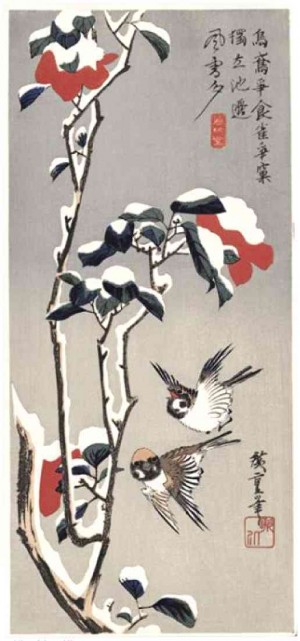
Utamaro, known for his portraits of beautiful women, is here with six of his beauties: “Takigawa of the Ogi-ya,” “Heron Girl,” “Okita of Naniwaya Serving a Cup of Tea,” and “Three Favorite Beauties.” The fragile figures are rendered mostly in muted or monochromatic tone, so that the sudden appearance of “Heron Girl” (of such vibrancy and color) is dumbfounding.
Supreme skills
These prints were reproduced by the Adachi Institute of Woodcut Prints using the same skills, techniques and materials of the printmakers of the 18th and 19th centuries.
Traditional woodblock printmaking is combined efforts and specialized skills of artist (designer), engraver (woodblock cutter), printmaker (printer), and publisher. The creation of a piece is a delicate and arduous process. Each is composed with numerous blocks of cherry wood on a single paper sheet (made from the inner bark of the mulberry tree), using a separate block for each color. With reproductions numbering in the thousands, one can only imagine that kind of rigor and precision.
So now we can apprehend why this delicate Japanese art was terribly admired by those Western artists, and how far-reaching its influence is on Western art.
Van Gogh has a way of putting it: “Just think of that; isn’t it almost a new religion that these Japanese teach us, who are so simple and live in nature as if they themselves were flowers?”

